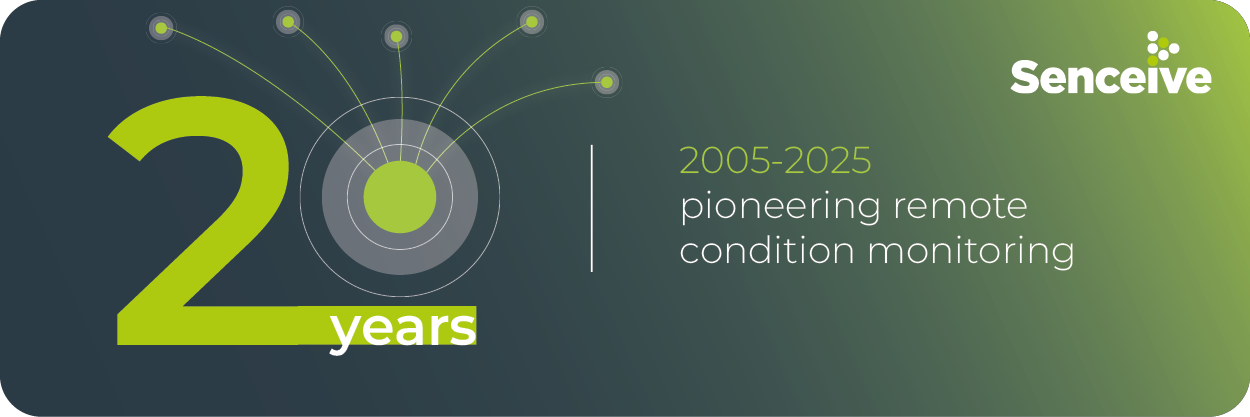
Published Tue 9th Sep 2025
From a university lab in 2005 to a global leader in wireless condition monitoring today, Senceive is proud to celebrate 20 years of innovation.
For two decades, we’ve worked alongside engineers, asset owners, and monitoring specialists to transform how geotechnical and structural assets are safeguarded. Our mission has always been the same: to make monitoring smarter, safer, and more reliable.
As we mark this anniversary, we’re looking back at some of the milestone projects that defined our journey and continue to inspire the future of wireless monitoring.
Barnehurst, South London (2019)
In early 2019, our InfraGuard intelligent earthworks monitoring system was installed at a railway cutting in Barnehurst, South London. The system provided an early warning of ground movement three days before a major landslip occurred, giving engineers the time they needed to act.
The landslip happened during the Monday morning rush hour, but because the system had already raised alerts of progressive ground movement, safety measures were in place and a potentially serious incident was averted.
This project highlighted the true value of real-time, automated monitoring, proving that wireless technology could not only detect issues but also prevent accidents before they happen. Since then, InfraGuard has grown into a powerful and scalable solution, protecting many of Network Rail’s highest-risk sites and supporting infrastructure managers worldwide.
Botlek Railway Tunnel, Netherlands (2017)
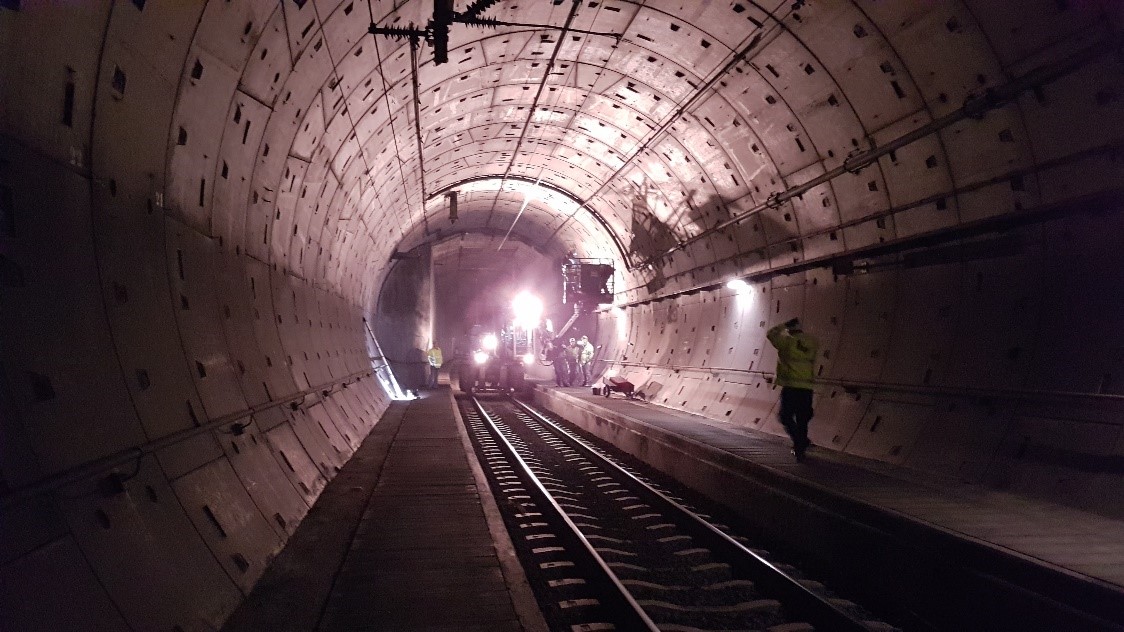
he Botlek Tunnel, a 1.8km bored twin railway tunnel near Rotterdam, passes under the busy Oude Maas river and is a vital link for freight and passenger transport. Long-term monitoring was essential, but with no cellular or internet signal in the tunnel, a reliable, maintenance-free solution was needed.
In 2017, working with Iv-Infra, we installed 434 FlatMesh Triaxial Tilt Nodes throughout the tunnel. The fully wireless network provided continuous, real-time monitoring of tunnel behaviour without the need for cabling, complex installations, or regular intervention.
The system was designed to last an extraordinary 25 years with minimal maintenance—making it one of the longest-term monitoring solutions of its kind. This project not only demonstrated the durability of Senceive’s technology, but also its ability to deliver critical data in environments where traditional systems simply couldn’t function.
22 Bishopsgate, London (2016)
The construction of 22 Bishopsgate, one of London’s most iconic skyscrapers, pushed the boundaries of engineering at 278 metres tall. During the build, the vertical alignment and stability of the core walls needed to be monitored with the highest precision to ensure safety and accuracy.
Leica Geosystems and Careys turned to Senceive’s FlatMesh wireless tilt sensors to support GNSS equipment and track movement as the core walls rose floor by floor. The lightweight, flexible sensors could be easily redeployed as construction progressed, without interrupting work.
With multi-year battery life, minimal maintenance, and seamless data integration with Leica’s systems, the wireless solution kept the project on schedule and ensured confidence in the tower’s structural performance. This project was an early showcase of how wireless monitoring could complement high-rise construction in busy urban environments.
Box Tunnel, U.K. (2015)
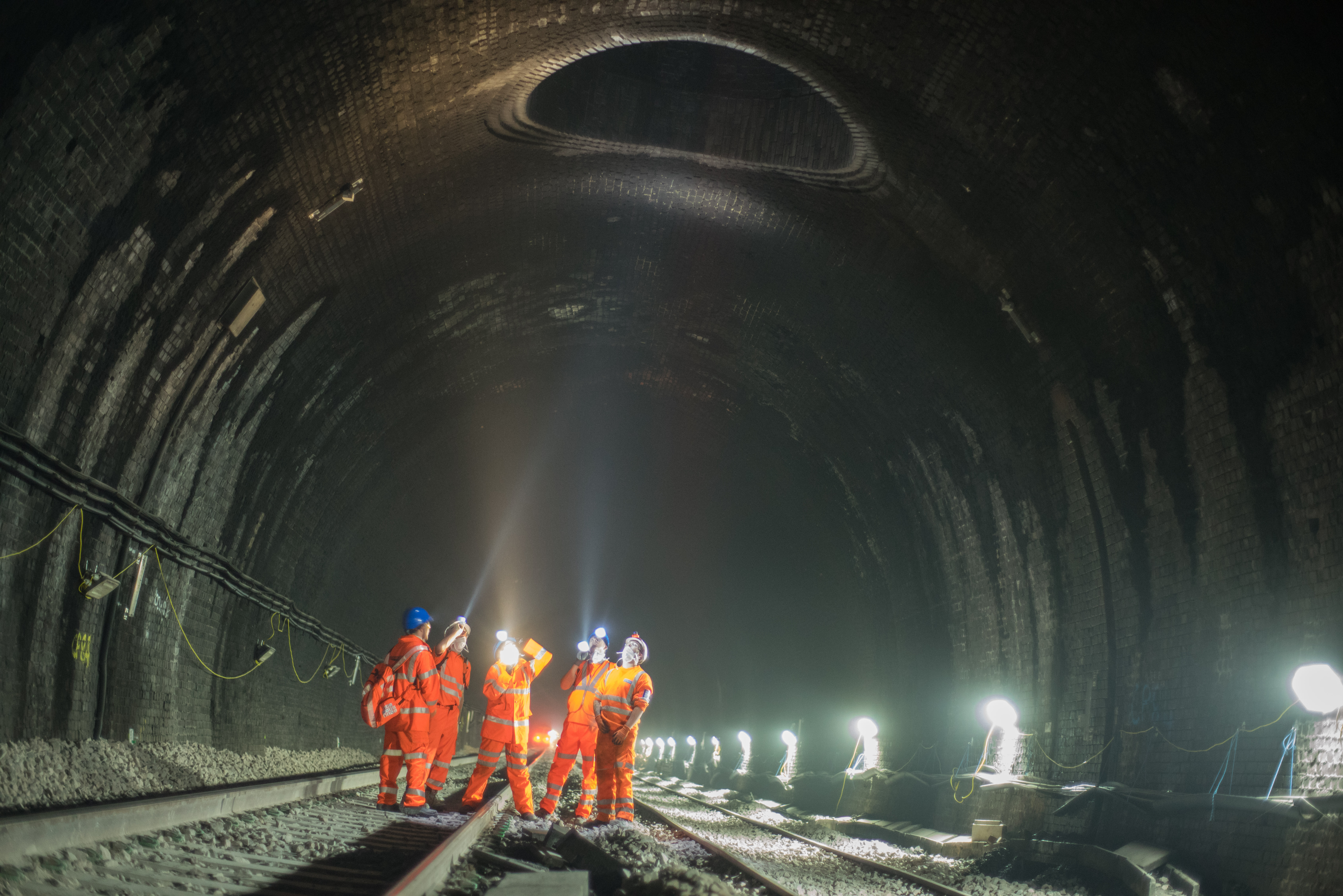
Isambard Kingdom Brunel’s historic Box Tunnel, built in the 1840s, remains a vital part of the Great Western Main Line. In 2015, as part of Network Rail’s electrification programme, engineers needed to safely lower the track inside the 3km tunnel to install overhead lines.
Monitoring distortion in the tunnel lining was critical, but traditional wired systems were impractical given the lack of power, the challenging geometry, and the need for rapid deployment. AECOM installed 250 of Senceive’s wireless tilt sensors to deliver near real-time measurements every 20 minutes.
The network operated entirely on battery power, automatically switching to backup gateways in case of damage or failure. The speed and reliability of the installation impressed engineers and judges alike, earning the project the NCE Tunnelling & Underground Space Award in 2015.
Costa Blanca Martorell Tunnels, Spain (2020)
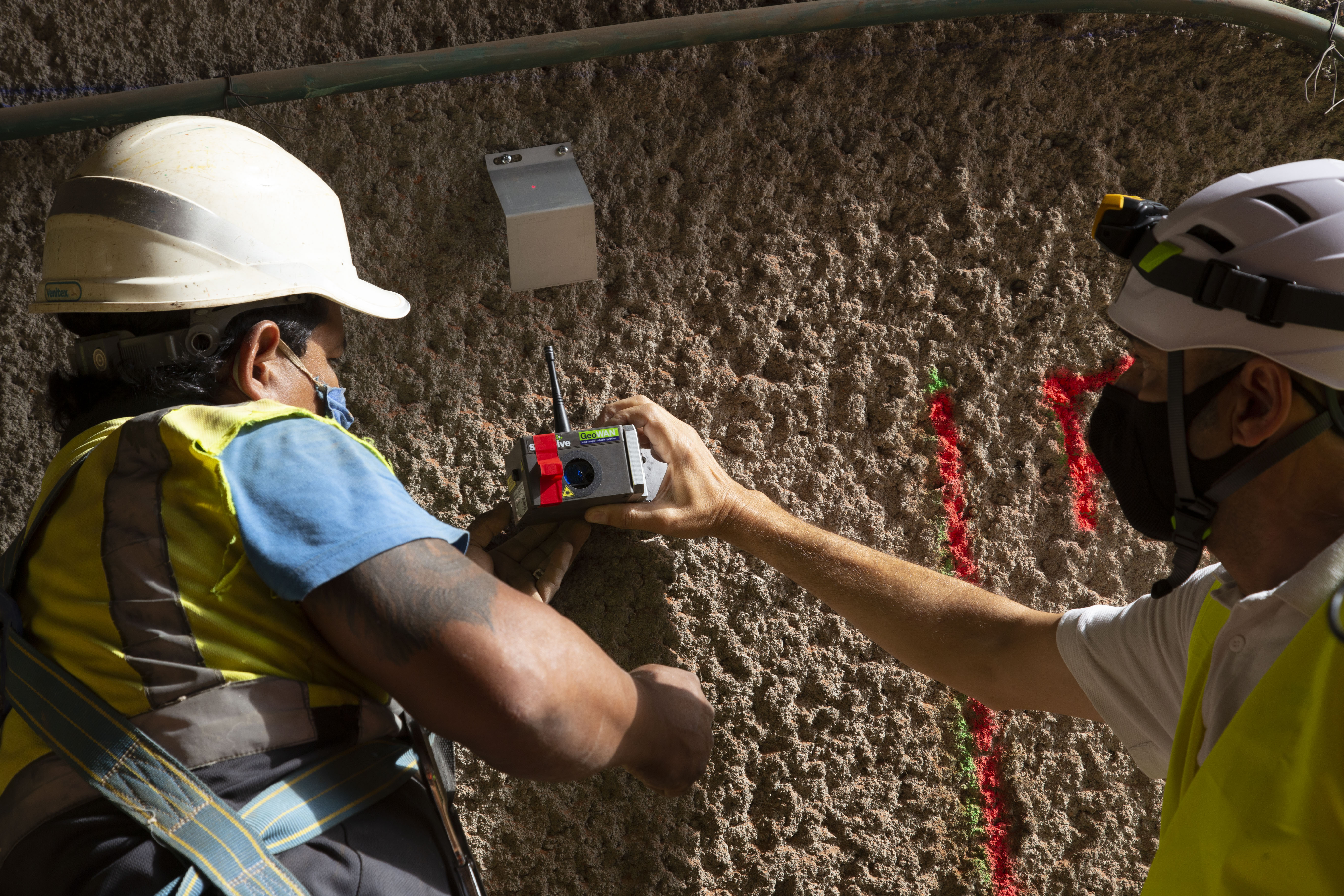
During ADIF’s Mediterranean Corridor upgrade, engineers needed to reline and lower the track inside a disused 1980s masonry tunnel in Spain’s Costa Blanca. The site posed multiple challenges: no mains power, no line of sight, and continuous heavy machinery operations.
Working alongside Instop, Senceive delivered a wireless monitoring solution combining triaxial tilt sensors with Optical Displacement Sensors (ODS). This unique system provided real-time, 24/7 data on tunnel behaviour, enabling stakeholders to monitor the works remotely and with confidence.
The innovative use of ODS in such a difficult environment was widely praised, earning the project the 2020 NCE Tunnelling Award for Instrumentation & Monitoring. It demonstrated how wireless systems can succeed where traditional survey methods fall short.
ProRail, Netherlands (2021)
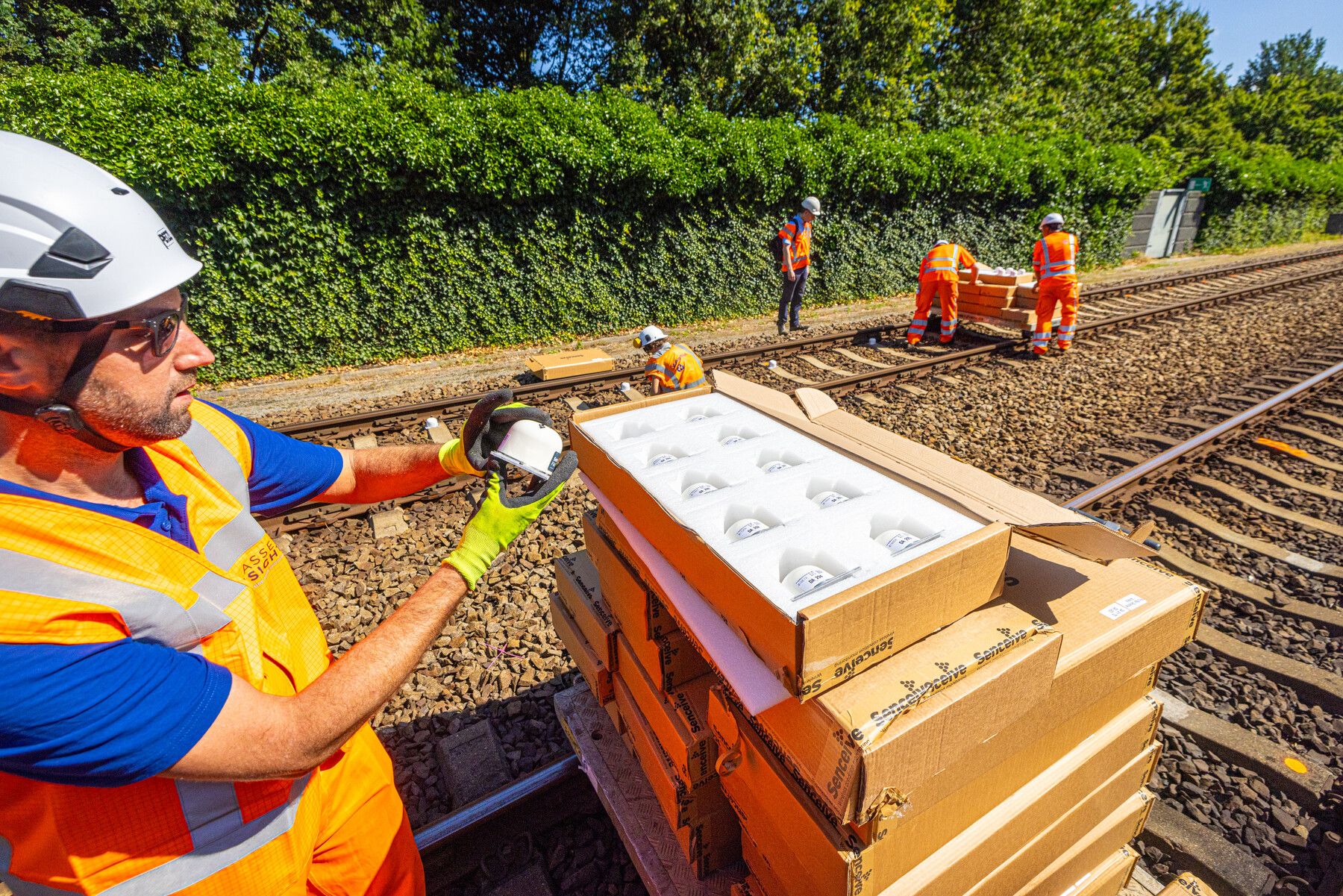
The Amsterdam–Berlin rail line is a vital European corridor, and when heavier locomotives were introduced, concerns arose about how the clay-rich soils in Twente would respond. Track stability was paramount, and ProRail required a rapid, real-time monitoring solution.
Working with Hyrde, VolkerRail, and Asset Insight, we deployed a record-breaking 3,622 NanoMacro Triaxial Tilt Sensors—Senceive’s largest ever single deployment. Remarkably, the system was installed in just five days, delivering one-minute reporting intervals and automatic alerts to support safe rail operations.
This project was not only a technical achievement but also a demonstration of scale and speed, proving that wireless systems can be deployed rapidly across entire rail networks when needed most.
Toulouse, France (2020)
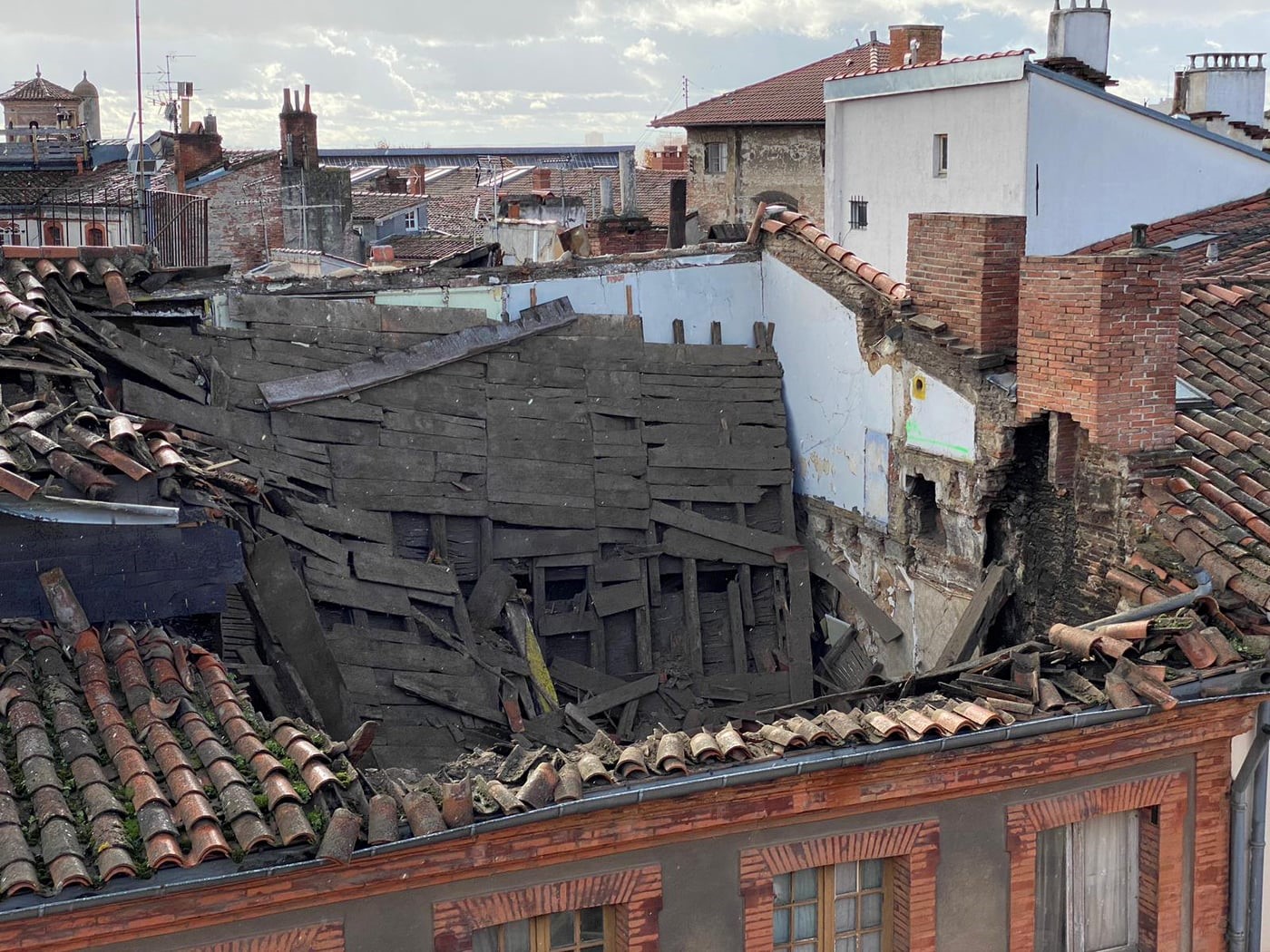
When the roof of a three-storey building collapsed in Toulouse in 2020, 28 nearby properties had to be evacuated immediately. The priority was ensuring the safety of residents and stabilising the surrounding area.
Within 24 hours, Geomesure and Topographie 47 installed a Senceive FlatMesh system combining triaxial tilt sensors and Optical Displacement Sensors. The wireless network provided local authorities with continuous, real-time insights into structural movement.
This rapid-response deployment enabled decisions about when it was safe for people to return to their homes. It was one of the earliest examples of Senceive’s technology being used in emergency response—and showed the versatility of wireless monitoring beyond long-term infrastructure projects.
Regent’s Crescent, London (2021)

Regent’s Crescent is a Grade I Listed landmark in central London, and its redevelopment required the excavation of deep basements and foundations just metres from London Underground tunnels. Safeguarding both the heritage façade and nearby transport infrastructure was essential.
Senceive deployed a bespoke system of over 300 wireless tilt and Optical Displacement Sensors, delivering continuous, remote data to stakeholders. This allowed excavation to proceed safely without disrupting the surrounding environment or construction schedule.
The project was praised for its ingenuity and impact, winning a New Civil Engineer Tunnelling Award in 2021. It stands as a prime example of how wireless monitoring can protect both historic structures and modern infrastructure during complex urban construction.
Looking Ahead
From tunnels and towers to railways and rapid emergency response, these projects demonstrate the trust placed in Senceive to deliver wireless monitoring where it matters most.
As we celebrate our 20th anniversary, we’re proud of the role we’ve played in keeping people safe, protecting critical infrastructure, and pushing the boundaries of what monitoring technology can achieve.
Here’s to the next 20 years of innovation.










